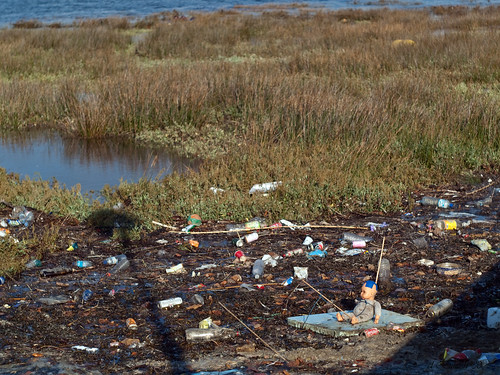Before the new Google zoo animals came along, you could make a decent living off of an outdated website with thin content pages. One of mine was half-updated with a new template and skating along just fine. The last 18 months, even webmasters of older, more successful sites have had to get up off their duffs and start exerting elbow grease again. When you have an older site, you forget things you did, links to other sites you let slip by, and the more you start looking over the mess, the bigger a headache you get. Here’s a strategy for breaking the humongous job down into smaller steps.
Step 1: Identify Why Your Site Slipped

The best way to create an overall strategy is to figure out what update or updates impacted your site. Once you know, then you know what you need to look for. If you look over your Google analytics history, you should see when big drops occurred. With you list of dates in front of you, check out SEOmoz’s list of Google updates to see which ones impacted your site: http://www.seomoz.org/google-algorithm-change
If you’ve been hit by Panda, your main focus should be looking for thin content pages. If Penguin got you, your back links are the first place to look, followed by your meta data and keyword density. If you practiced the really old tricks that stopped working a long time ago, make sure to get rid of meta refreshes, doorway pages and hidden text.
Step 2: Panda Sufferers
A really easy way to identify your Panda pages is to look in Google webmaster tools. Go to “search queries,” then “top pages” and then go all the way to the end of the list. If you work backwards from the end of the list, you’ll know which pages are your least successful. Start working on these first.
Another tip you should take from Webmaster tools is that your duplicate title and meta descriptions should be fixed. Don’t go overboard with fixing. Over-optimizing the meta tags can lead to triggering spam detection. Only fix meta data that does not comply with Google’s Webmaster Tools Guidelines.
Step 3: Organization
If you have tier 2 pages with hundreds and hundreds of links on them, it’s time to reorganize your content. Make a list of sub-categories to assign those links to and just focus on creating one new category at a time and moving the content over to that page.
Step 4: Modernize Your Site
If your site is suffering from the boredom of having page after page of pure text with nothing interesting to see or share with social networks, start identifying the types of content that could improve those pages. It’s simple enough to use Add This to incorporate social sharing buttons on your site, but if there’s nothing to share, no one will.
One easy way to start dressing up old content is to use stock images. Find photos that compliment your content on sites like IStockPhoto.com. If your content is just 5 plain old paragraphs, add headings, numbers and bullets to further organize it and make it reader friendly.
Don’t give yourself a timeline for the entire project. That will surely lead to more stress. Instead, pick a time frame to accomplish each one of your tasks. As Google’s algorithm updates, you should see your work pay off.
Attached Images:
- License: Creative Commons image source
Theresa Happe works with Buy Domains, where you will find thousands of available domain names for sale in any niche and price range.










Comments